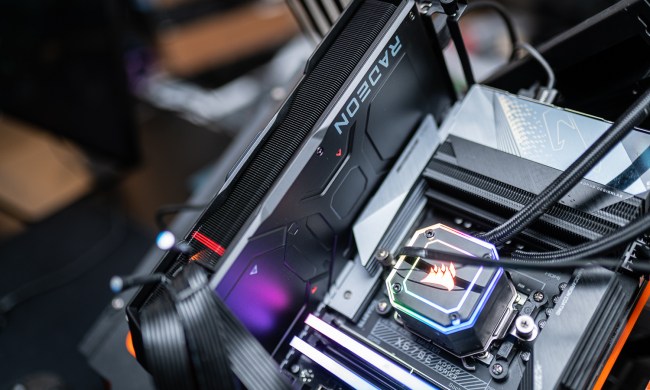It looks like future gaming handhelds might have quite a lot of GPU power — at least if this new AMD Strix Halo leak is to be believed. The upcoming APU lineup is said to come with up to 40 RDNA 3.5 compute units (CUs), which marks a massive upgrade from the last-gen Strix Point. They’re also said to support up to 96GB of video memory.
By the looks of it, the Strix Halo might be more of a mobile workstation solution than a gaming product — but with these specs, gaming on laptops equipped with these APUs should be entirely possible even without a dedicated graphics card. The specs sound really promising for gaming handhelds, though, including next-gen versions of the Asus ROG Ally X or the Steam Deck. Let’s dig into what’s said to be coming in 2025, as per the latest leak from Weibo.
First of all, AMD’s new naming scheme evolved once more, and Apple could feel a little bit flattered. The Strix Halo lineup is said to be called Ryzen AI Max+ and Ryzen AI Max, which makes it hard not to think of Apple’s M silicon in its Max iteration. With Intel Core Ultra also adopting a similar branding (after all, Apple has M Ultra chips too), all three companies now have some overlap in their chip naming schemes.
Names aside, the new Ryzen AI Max is said to come in three variants at first, starting with the flagship Ryzen AI Max+ 395 with 16 cores and 40 RDNA 3.5 CUs. Wccftech also notes that this chip will come with four-channel LPDDR5X memory support as well as a thermal design power (TDP) of 130 watts.

The Ryzen AI Max 390 follows with 12 CPU cores and 40 RDNA 3.5 CUs. Lastly, the Ryzen AI Max 385 comes with just eight cores, but still a formidable GPU with 32 CUs.
The number of CUs is quite thrilling — that’s twice the number of CUs compared to the last-gen Strix Point APUs. The lowest variant actually sports the same number of CUs as the desktop version of the RX 6600 XT. That’s a quite beefy built-in GPU, and it could help AMD not just dominate various gaming handhelds, but also compete against Apple and Intel’s Core Ultra in workstation laptops.
It’s too early to tell when these APUs might hit the market, so these specs might also be subject to change. Let’s hope that they end up in gaming systems, too, as with the right pricing, AMD could have a real winner on its hands.





